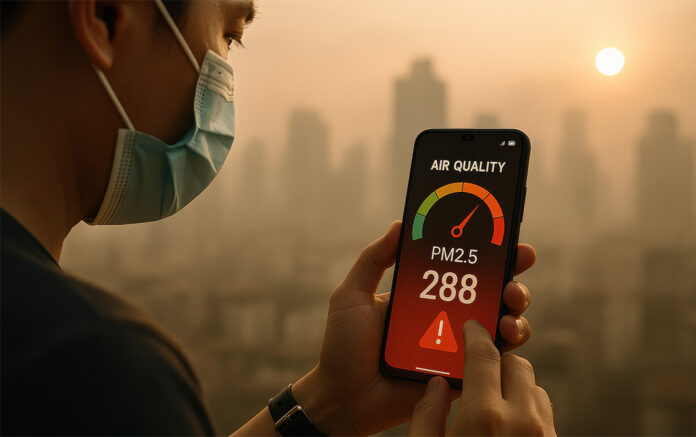A sweeping new study published this week in the American Journal of Public Health has revealed a troubling connection between outdoor air pollution and breast cancer risk among women in the United States.
The multiyear analysis, involving more than 400,000 women and 28,000 confirmed breast cancer cases, found that exposure to traffic-related pollutants—particularly nitrogen dioxide (NO₂) and fine particulate matter (PM2.5)—significantly increases the likelihood of developing breast cancer, including its more aggressive forms.
Led by Alexandra White of the National Institutes of Health (NIH), the study is the largest of its kind to date, combining data from five major breast cancer cohort studies conducted over several decades. The research team included scientists from Harvard University, Oregon State University, the University of Washington, and other leading institutions.
What sets this study apart is its longitudinal design. Researchers tracked participants for up to 10 years prior to diagnosis, even as they moved between neighbourhoods. By overlaying residential histories with data from more than 2,600 air quality monitors across the U.S., the team was able to assess individual exposure levels to key pollutants.
Veronica Irvin, co-author and public health professor at Oregon State University, explained:
“Nitrogen dioxide is a proxy for pollution from car traffic. A 10-parts-per-billion increase in NO₂ equated to a 3% increase in overall breast cancer incidence”.
Given the estimated 316,950 breast cancer cases expected in the U.S. this year, that 3% translates to roughly 9,500 potentially preventable cases if NO₂ levels were reduced.
Tiny particle problem
The study also found that a 5 micrograms per cubic meter increase in PM2.5—tiny airborne particles that penetrate deep into the lungs—was associated with a higher incidence of hormone receptor-negative breast cancer. These tumours lack receptors for estrogen and progesterone, making them more difficult to treat and more likely to result in poorer outcomes.
This finding is particularly alarming because PM2.5 exposure is widespread and often underestimated. These particles originate from vehicle exhaust, industrial emissions, and even residential wood burning.
Dr Kefah Mokbel, a breast cancer specialist not involved in the study, commented on the broader implications:
“These findings reinforce the critical connection between environmental exposures and women’s health, underscoring the need for stronger public health and policy actions”.
Below EPA thresholds
One of the most striking aspects of the study is that the average NO₂ concentrations linked to increased cancer risk were below current Environmental Protection Agency (EPA) safety thresholds. This raises urgent questions about whether existing air quality standards are sufficient to protect public health.
Irvin emphasised the need for systemic change:
“It’s often not realistic for people to leave their homes and relocate to areas with better air quality in search of less health risk, so we need more effective clean air laws to help those who are most in need”.
She also called for policies that reduce car traffic and promote alternative transportation, such as public transit, cycling, and pedestrian-friendly urban planning.
Environment still a critical risk
Breast cancer remains the second leading cause of cancer death among women in the U.S., following lung cancer. One in eight women will develop the disease in her lifetime, and more than 4 million survivors currently live in the country. While genetic and lifestyle factors have long been studied, environmental exposures are gaining recognition as critical contributors to cancer risk.
The incidence of breast cancer has been rising steadily over the past 40 years, even as air pollution levels in the U.S. remain lower than in many other industrialised nations. This paradox suggests that even low-level chronic exposure may have cumulative effects on health.
Although the study focused on U.S. populations, its findings have global relevance. Urban centres worldwide—Aucklanders, for instance—face similar challenges with traffic emissions and air quality. For New Zealand policymakers and public health advocates, this research adds weight to calls for stricter emissions standards and urban planning that prioritises clean air. The same applies to several Australian cities.
From a lifestyle medicine perspective, the study also reinforces the importance of reducing environmental risk factors alongside personal health behaviours. Clean air is not just a climate issue—it’s a cancer prevention strategy.
This landmark study offers compelling evidence that air pollution is not just a respiratory hazard—it’s a carcinogen. As researchers continue to unravel the environmental roots of disease, the message is clear: clean air saves lives. For women everywhere, especially those in traffic-heavy neighbourhoods, this research underscores the urgent need for policy reform, community advocacy, and continued scientific vigilance.





